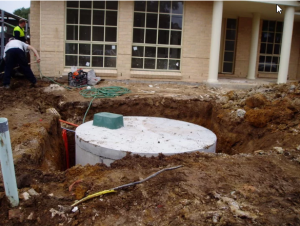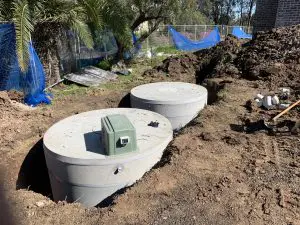Why Use A Concrete Septic Tank?
When customers purchase a septic tank, they often want to know that it will last a long time and that it will work efficiently without causing them many problems. This is one of the reasons why concrete septic tanks are so highly regarded. While plastic tanks might be a less expensive option, here are the top 5 reasons why you should pick a concrete septic tank.
1. Low-risk installation procedure
Since plastic septic tanks are less robust than concrete, the equipment used during shipping and installation might break them. This damage can result in immediate expenses, such as replacement, as well as long-term costs if the damage causes leaking. Concrete, on the other hand, is practically never weakened during installation and will only break under extreme conditions, such as contact with corrosive and toxic chemicals.
2. Highly durable and hard-wearing
 Heavy rain can be harmful to a plastic septic tank system over time, but the same can’t be said for concrete septic tanks. For starters, since concrete septic tanks are so large, they are less likely to flood when it rains. Second, severe rain can cause plastic tanks to slide around. The weight of a concrete tank also keeps it anchored to the ground, preventing this from happening.
Heavy rain can be harmful to a plastic septic tank system over time, but the same can’t be said for concrete septic tanks. For starters, since concrete septic tanks are so large, they are less likely to flood when it rains. Second, severe rain can cause plastic tanks to slide around. The weight of a concrete tank also keeps it anchored to the ground, preventing this from happening.
3. Long-lasting
People researching concrete septic tanks may be intrigued to discover that the Romans built concrete that has lasted for countless generations as an impermeable sea defence. If the Romans’ concrete walls can endure storms for this long, then a concrete septic tank will more than suffice for your company or house!
Some polymers are prone to snapping and cracking, yet concrete is so durable and watertight that we use it to construct dams, houses and bridges.
4. Higher effluent capacity
The wastewater and filth in a septic tank, termed effluent, are meant to decay over time. The septic tank must be pumped if it fills up too fast. Concrete septic tanks are much bigger in size, so homeowners with these systems are much less likely to require pumping.
5. No risk of collapse while pumping
Plastic septic tanks, as previously mentioned, are more likely to need pumping at some stage and the tank may need to be completely replaced in the event of complete collapse. Even if they have to be pumped several times, concrete tanks won’t break. So, consider a concrete model when replacing your current septic tank to gain the benefits stated above.
Contact Eco-Septic today
Eco-Septic is a Sydney-based company that specialises in a wide range of commercial wastewater solutions. We can give quick and free quotations for all your wastewater treatment needs while keeping your individual budget in mind.
We service all Sydney suburbs as well as the South Coast, Southern Highlands, Riverina, Snowy Mountains, Blue Mountains and Hawkesbury, North and Mid North Coast, Laguna, Bateman’s Bay, Mallacoota, Narooma, Nowra, Balmora, Cobargo, Avondale, Glenmore, Mogo, Glenn Ines, Tarago, Albury, Faulconbridge, Torrumbarry, Maraylya and Sherbrooke. So, contact us on 1800 808 135 for a quick quote, or go to www.ecoseptic.com.au for more information.
Related Posts
- What is Commercial or Industrial Wastewater?
- Are there advantages of having a septic tank system?
- Septic Tank vs. Sewer System: Making the Right Choice for Your Sydney Property
- Septic Tank Maintenance 101: A Comprehensive Guide for Sydney Homeowners
- What Should You Know Before You Install A Septic Tank?
- Common AWTS Problems in Victoria and How to Solve Them
- Septic Tank Maintenance Guide
- How to maintain a septic tank




